FW
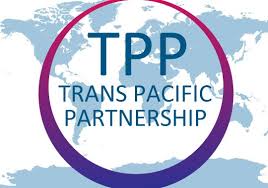
Transpacific Partnership Agreement (TPP) was one of the top discussion points on Day 1 of Prime Source Forum. Discussions in the session ‘Update on TPP and development conditions in ASEAN and Africa’ finally had to be split into two between the topics: TPP and emergence of Africa in manufacturing.
Moderator of the session Alex Young , Group CEO, TexRay Industrial said in his opening remarks “China that has been dominating world textile market for over 20 years now, representing 40 per cent of American imports, with an increasing wage structure of 15 per cent year on year, will have to give away part of its commodity business.” However, shift of business from China is itself a speculative subject and needs to be seen going forward.
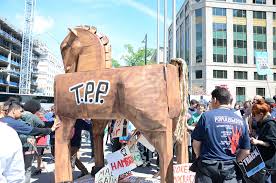
“TPP finalized on October 5, 2015 and signed on February 4, 2016, after a lot of government-to-government secretive discussions for five years, comes at this point in time, as a very important partnership to encourage new supply bases,” adds Prabakaran Kesavan , Founder Venlaak Wear Int, a panelist. He says, though few may think about Vietnam or Cambodia, there’s another emerging context about Africa, where business may shift in current paradigm. In addition to 12 country members who have signed TPP, a few other countries like Philippines, Korea and Thailand may be interested in joining. “TPP is considered a living agreement, where new countries can join, new topics can be added. TPP is being considered the most ambitious deal. The scope of this treaty covers subjects like sustainability, minimum wages, child labour, environmental issues and along with IPR issues, one whole chapter is on SMSs itself, countries are reviewing it very carefully.”
Raphael B Madarang, Director, Global Trade Compliances and Management, APL Logistics points out TPP would facilitate tariff reduction from 16 to 32 per cent, making a huge difference. This would help restructure and relocation of supply locations across the supply chain. Because of the huge duty reduction most member countries will avail these benefits in a span of 5 to 10 years. However, Vietnam is being considered as the champion of TPP, with its low cost and direct access to the US and Canada. Vietnam a also has a FTA with EU. Even though infrastructure is in place, from skill and labour point of view, may face issues of skill shortage by 2017-118.
Talking about challenges for implementation says Kesavan said, “There will be many objections and challenges to implement TPP smoothly, even from the US’ point of view, there’s a political agenda on weather America wants to go ahead with TPP or not? Is it really a job threat for the US, especially from textile industry’s perspective?....” Besides, technically there are two years before TPP is implemented, time enough for all partner countries to set up their individual internal structures and policy framework streamlined to get into this.
The 5,444 page TPP document, as of now is a challenge to be translated into different languages for different countries as also the interpretation for different regulations. There are challenges like who is going to monitor, from where yarn will come under Yarn Forward rule, there are still many issues that need to be cleared at government-to-government level.
Avedis H Seferian, President & CEO, Worldwide Responsible Accredited Production ( WRAP) said, “Industry needs to look at TPP holistically for better implementation, that has been emphasized in all the sessions. Addressing Chapter 19 of TPP, labour requirements, and others, however I feel TPP bashing is more political, once we have candidates settled for elections in the USA, it would be more realistic than rhetoric , I am more optimistic.”
By 2018, China is likely to be a net importer of textiles and garments, felt some panelists. Vietnam as of now sources huge amount of yarn from China but in order to capture TPP benefits, Vietnam may have to shift its yarn sourcing from the US or the other TPP countries. Shift and relocation of business is likely to happen but where will this shift be remains to be seen.
“Personally, I have more confidence in Africa, where the shift is likely to be,” opined Helen Hai, Goodwill Ambassador, United Nation Industrial Development Organisation ( UNIDO). Hai emphasized that she has worked in Africa and it is the next best bet for the world. Prabakaran however, felt it remains to be seen if China is going to relocate its production to Africa or India or there are more options. Like in case of Yarn forward rule for Vietnam, it could be India, Turkey or Bangladesh or may be American fabrics manufacturing specially denim gets share of the pie.

In his welcome address, on second day of PSF, Hon Felix Chung Kwok-pan, Member, Functional Consultancy-Textile and Garment, The Legislative Council of Hong Kong, said that when five years ago talks of TPP came across Hong Kong Government, it was not a very interesting idea, and our government didn’t respond in a positive manner, as manufacturing from Hong Kong was shifting largely to other locations. Now, when we made presentation to the government about the scope TPP may offer in its current format, we may have manufacturing coming back to Hong Kong.
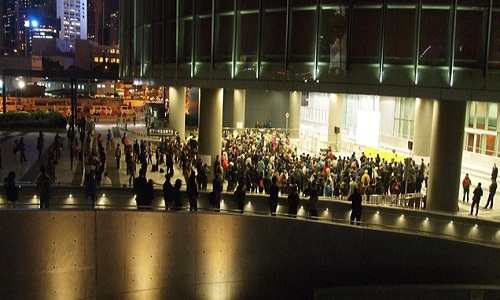
Talking about the supportive role of HK government he mentioned that earlier during the Budget announcement in 2016, $500 million has been allocated to further the development of the fashion industry that shall also help aggressively promoting CENTRESTAGE, a news initiative of HKTDC to promote local talent and Asian brands, joining the global fashion calendar in the month of September.
As a legislative, he referred to a meeting he attended in San Francisco last week, where it has been decided to hold a summit in Hong Kong in 2017 in association with Sustainable Apparel Coalition (SAC). He also referred to his meeting in head offices of Facebook and Google, as how they could explore to have some new cooperation to track changing consumer behavior of consumer today, so that the changes could be applied in supply chain. Eventually, he hopes that in next 3 to5 years, Hong Kong will change to a truly global fashion centre
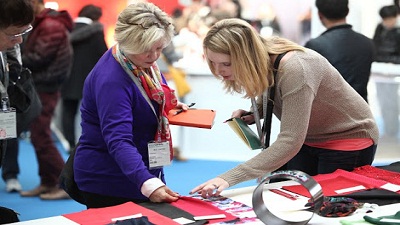
This year’s Intertextile Shanghai Apparel Fabrics is poised to be the most diverse Spring edition yet, with a number of product zones adding to the flavour of the fair. This edition’s one of the larger product zones is ‘Beyond Denim,’ with over 90 exhibitors presenting their latest products including innovative denim yarn as well as stretch, embroidered, jacquard and knit denim fabrics.
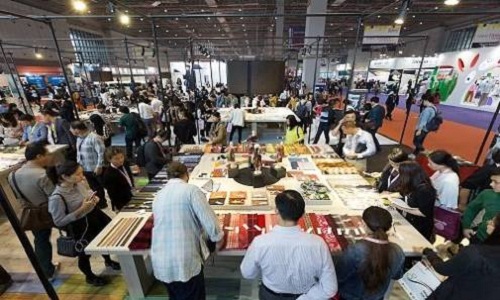
Over 3,000 exhibitors from 28 countries and regions (in 2015 there were 2,636 exhibitors from 24 countries) are converging on Shanghai for the latest Spring edition of Intertextile Shanghai Apparel Fabrics. The fair takes place from March 16 to 18 at the National Exhibition and Convention Center (Shanghai). The organisers have focused a lot attention since the last edition on improving existing services and facilities and adding new ones to increase the convenience for participants.
Infrastructure improvements
As Wendy Wen, Senior General Manager, Messe Frankfurt (HK) says exhibitors and buyers will notice a lot of improvements to the fairground this year, particularly around the entrance to the venue and services inside the halls. Some of these services include a number of new restaurants, cafes, cloak rooms, free massage area, charging stations for electronic devices and a hotel shuttle bus service.
Numerous groupings of exhibitors by country/region and product also assist buyers in their sourcing experience. The International Hall (Hall 7.2) houses SalonEurope, Premium Wool Zone, Verve for Design, Functional Lab, All About Sustainability and the Beyond Denim product zones. If it’s a particular country buyers are after, then the Milano Unica Pavilion from Italy, France, Germany and Portugal Zones as well as country/region pavilions from Japan, Korea, Taiwan, Pakistan and the TEXPROCIL Pavilion from India are all located in this hall.
Meanwhile, Hall 8.1 features the Accessories Zone with overseas and domestic fashion and garment accessories suppliers. Domestic exhibitors feature in this and four other halls: 6.1, 6.2 and 8.2 for ladieswear, 6.1 for lingerie and swimwear, 7.1 for suiting and shirting, 8.1 for functional and sportswear and 8.2 for casual wear.
Options to choose from
The fair has plenty of options on-hand for buyers that prefer to start their sourcing experience by discovering the S/S 2017 trends first. The Intertextile Directions Trend Forum is located in Hall 7.2, while three domestic forums include the new Fashion Focus trend forum in Hall 6.2, and areas for suiting trends in Hall 7.1 and ladieswear in Hall 6.1. Trend Forum Tours also take place on days 1 and 2. More in-depth knowledge can be garnered from seminars on design and trends, sustainability, market information, technology and more, as well as new panel discussions focusing on denim, sustainability and functional fabrics.
In addition to apparel fabrics and accessories, four other textile fairs occur concurrently: Yarn Expo Spring (Hall 5.1), Intertextile Shanghai Home Textiles – Spring Edition (Hall 5.2), CHIC (Halls 1-3 and 4.1) and PH Value (Hall 1).
Intertextile Shanghai Apparel Fabrics-Spring Edition 2016 is co-organised by Messe Frankfurt (HK); the Sub-Council of Textile Industry, CCPIT; and the China Textile Information Centre.
Indorama has launched its spandex brand, Inviya. Inviya can be easily incorporated into a variety of textile processing methods such as core spinning, air covering, circular knitting, etc. This makes it possible to be included in the manufacturing process of a wide variety of textiles. With this versatility, Inviya is also used to add extra glamour, comfort, and charm to even ethnic clothing, both daily wear as well as special occasion wear.
Be it lounge wear, swimwear, winter wear, or inner wear, Inviya has amazing practical benefits that add value to the garment manufacturer and to the consumer. No longer do Indian textile manufacturers have to import world class quality spandex fibers for use in their garment manufacturing processes.
Inviya is fast becoming the spandex filament of choice among discerning manufacturers in India and abroad due to its many benefits and properties that set it apart from the rest. It is more stretchable than other brands of spandex, being six times more stretchable than its original length. Since Inviya is so adaptable to different dyeing processes, it makes available a wide variety of colors and designs that add vibrancy to everyday clothing.
Inviya comes from Indorama’s manufacturing facility in Himachal Pradesh.
www.inviya.com/?Home
Nepal’s garment entrepreneurs, who were trying to boost their business with the recent enactment of Trade Facilitation and Trade Enforcement Act by the US Congress, are disappointed now. During a recent interaction with Garment Association Nepal (GAN), the visiting Deputy Assistant US Trade Representative Dawn Shackleford made it clear that the law does not encompass major garment items produced in the country.
The Congress, through the law, has authorised the US government to extend duty-free facility to Nepal for 66 items that include pashmina products, headgear, shawls, leather products, scarves, and travel goods (bags, suitcases), among others, one of the representatives of GAN quoted Shackleford as saying during the interaction. The facility also includes carpet items manufactured in Nepal, which had been excluded by the US government’s Generalised System of Preferences (GSP) facility.
The major garment items produced in Nepal are shirts, trousers, jackets, suits, among others. However, these items have not made the cut. Shackleford visited Nepal recently to hold discussions on the Trade and Investment Framework Agreement (TIFA) council meeting with the government. The TIFA council meeting was expected to be held once a year when the framework agreement was signed in 2011, but has only met once in the US after the agreement was signed.
Bangladesh’s exporters say they don’t get the benefits of 100 per cent duty-free access to Indian markets due to tariff and non-tariff barriers. India has awarded Bangladesh duty- and quota-free access of all products except alcohol and tobacco to its market.
Bangladesh is entirely dependent on the import of cotton from India to meet its demand. And cotton imports from India are on the rise. There are 400 cotton mills in Bangladesh, which consumed 6.1 million cotton bales worth about $2.2 billion in 2015. These mills produce 2,250 million kg of yarn over 11 million spindles.
India is the largest supplier of cotton and cotton yarn to Bangladesh. Cotton, cotton yarn and cotton fabric are the single largest commodity export from India, which accounted for about 22.5 per cent of India’s total exports to Bangladesh. The general opinion is that the trade volume between India and Bangladesh is in India’s favor. Bangladesh imported products worth $5.82 billion from India in the last fiscal year while its export was worth only $527 million.
Moreover frequent visits by business people from both countries have created a friendly atmosphere. One challenge Bangladesh faces is the procurement of cotton at a competitive price.
Lack of supply orders has forced many medium and small factories in Bangladesh to shut down in the last 34 months. These factories are facing acute hardships with western buyers refusing to buy from them due to safety concerns. Another problem is the failure of several factory owners to pay workers’ wages on time. This has caused periodic unrests at small and medium factories.
Since the collapse of Rana Plaza in 2013, over 300 apparel factories housed in shared buildings were closed due to buyers’ refusal to place supply orders. Owners of over 400 factories are keen to relocate from shared and converted buildings but they are unable to do so due to scarcity of land and moratoriums on extending power and gas connections and non-availability of money.
Business uncertainties facing apparel factories housed in shared buildings could cost the jobs of 1.2 million workers as it would be difficult to provide them alternative employments. Some factory owners say they have no interest in fixing safety issues as they do not get orders from signatory buyers and factory remediation requires huge expenditures. The net result is that jobs of about a million apparel workers have become uncertain.
Foreign retailers are choosing Bangladesh to source trendy denim wear at low prices as 37 foreign companies from 12 countries are scheduled to participate in the denim exposition to be held in Dhaka on April 25-26. The Denim Expo, 2016 will be organized at the Basundhara International Convention Center at Basundhara city in Dhaka.
As Denim Expert Managing Director Mostafiz Uddin, the organiser of the fair says they have received remarkable response from international retailers to attend the expo as they think Bangladesh is a good place to source denim from - at reasonable prices. Organisers initially planned to install 50 stalls for the fair. Of those, 12 stalls have been given for Bangladeshi denim factories while 37 companies of 12 countries will get 37. Another stall will be used as expo office. The companies from Germany, China, Italy, Singapore, Turkey, Japan, India, Pakistan, Vietnam, Spain, Brazil and Thailand are participating this time, according to the organisers.
Bangladeshi entrepreneurs supply denim to major retailers and brands, including H&M, Uniqlo, Levis, Nike, Tesco, Wrangler, s.Oliver, Hugo Boss, Puma, Primark, JC Penney, C&A, Tommy Hilfiger, Inditex, Walmart, M&S, Calvin Klein, Diesel, Gap, Channel and Dior and G-Star. Bangladesh has 26 denim factories that produce around 360 million yards of denim fabric every year. Total investment in the sub-sector stands at more than Tk 7,000 crore. Bangladeshi firms meet 40 per cent of demand for fabric by the local denim makers and exporters; imports account for the rest.
Known for cheap and basic garment production, Bangladesh is now drawing the attention of global buyers for high end items, especially in the denim segment. Global brands have started exploring the sourcing potential of handloom denim fabrics dyed with natural indigo from Bangladesh. In recent years, a few companies have started cultivating natural indigo and this indigo is mainly used in dyeing high quality, handmade products for high end and luxury markets.
Denim made on handlooms is softer than mill made denim, has a unique texture and breathes well and helps feel cool in summer and retain body warmth in winter. After cutting and collection of indigo leaves, they are soaked in a tank to produce an oxidised slurry, which is later boiled, sun-dried and made into vats. Organic cotton and natural indigo dye are being used for producing the handloom denim fabric.
Sustainable fashion companies in Germany are among the buyers that are currently working with a local company to produce hand-woven indigo denim fabric. Natural indigo is growing better in Bangladesh compared with other countries.
Production of ecological jeans has begun in Bangladesh. One instance is handloom selvedge denim fabric. Denim fabric with self-binding edges on both ends, running along the complete length of the fabric, is known as selvedge denim. Though the sampling development part is done outside Bangladesh, there is a possibility of stitching the finished products locally.
With a broad coalition of industry organizations, trade unions, civil society organizations, the Dutch government have tabled an agreement to achieve practical improvements in and ensure the sustainability of the international garment and textile supply chain. In fact, they want to address problems such as dangerous working conditions and environmental pollution.
The next steps in this process will be to secure funding of the agreement and have it signed in June by at least 35 companies in the sector, who together represent at least 30 per cent of sales in the Netherlands. The parties to the agreement will then also sign it. The agreement has been drafted under the guidance of the Social and Economic Council of the Netherlands (SER).
According to Lilianne Ploumen, Dutch Minister of Foreign Trade and Development Cooperation, this widely supported agreement, enterprises and civil-society organizations are taking a great step forward in combating malpractices in the garment and textile industry in developing countries.
They will, together endeavour to improve working conditions in these countries and make the manufacturing process more environmentally friendly. This is very good news for all those people who are still working excessively long days in dangerous conditions for very low pay. It’s also good news for the industry as a whole and for the consumer: everyone will be better off as a result.












